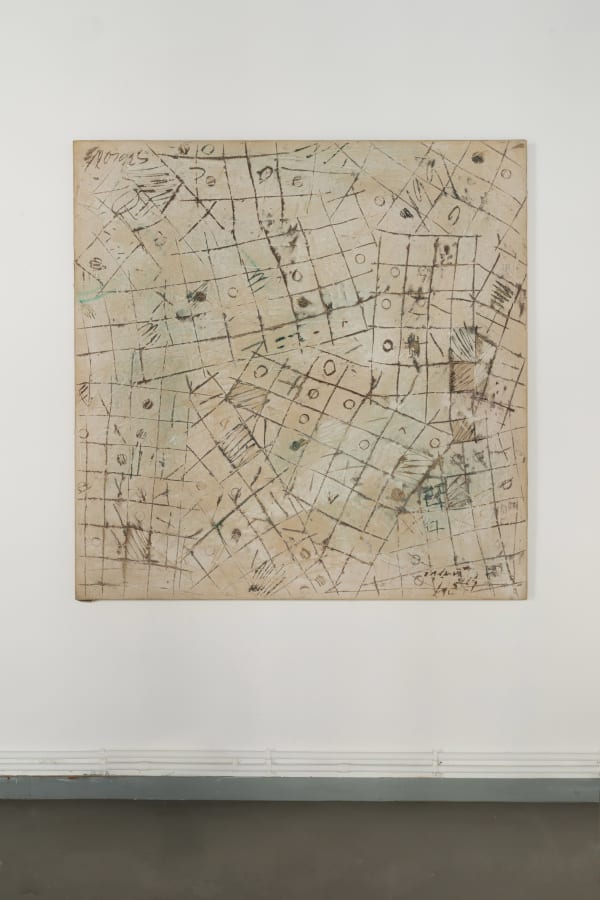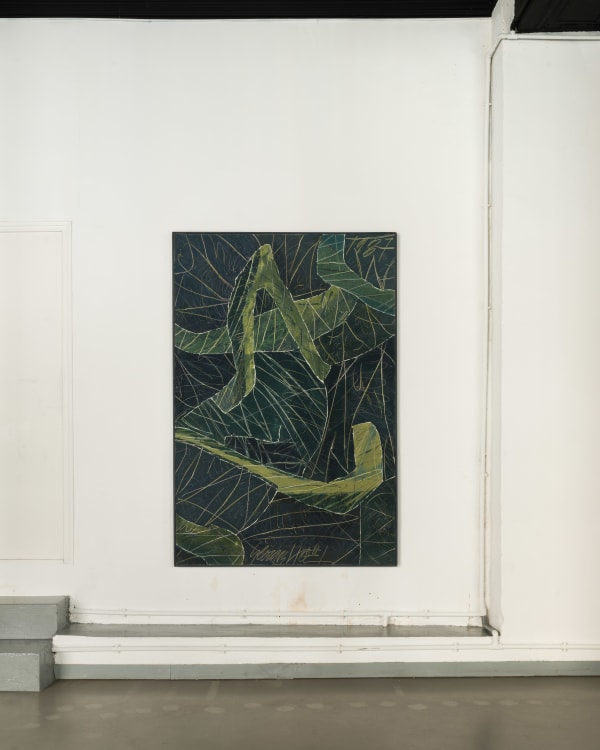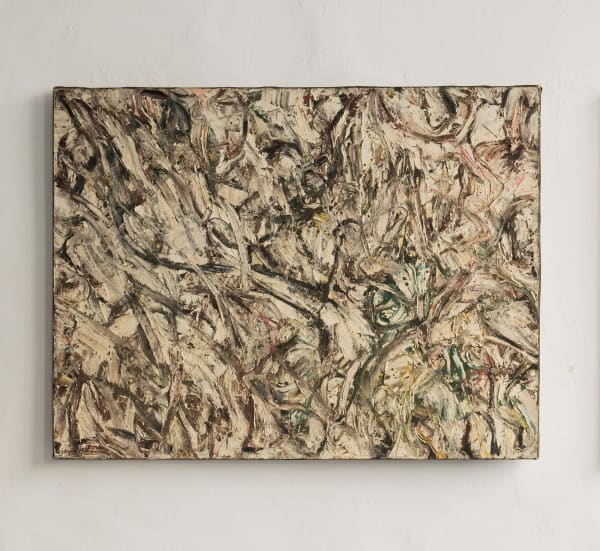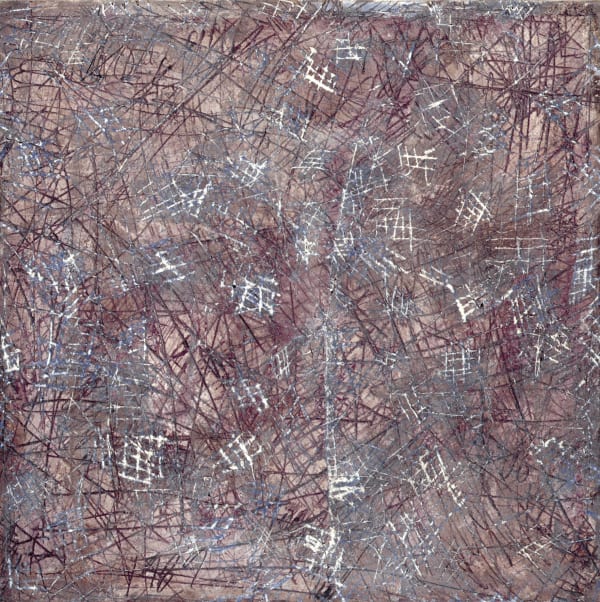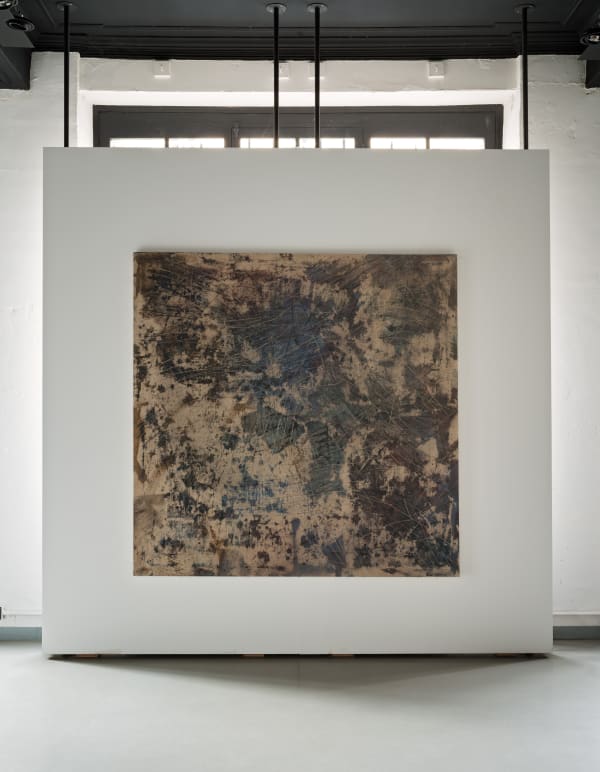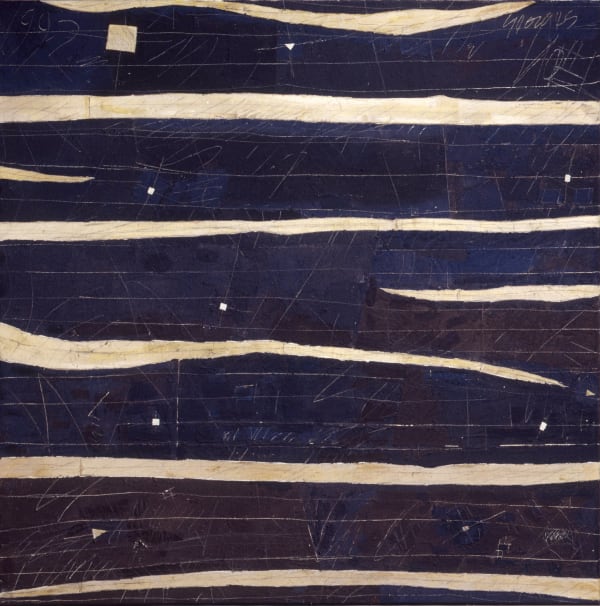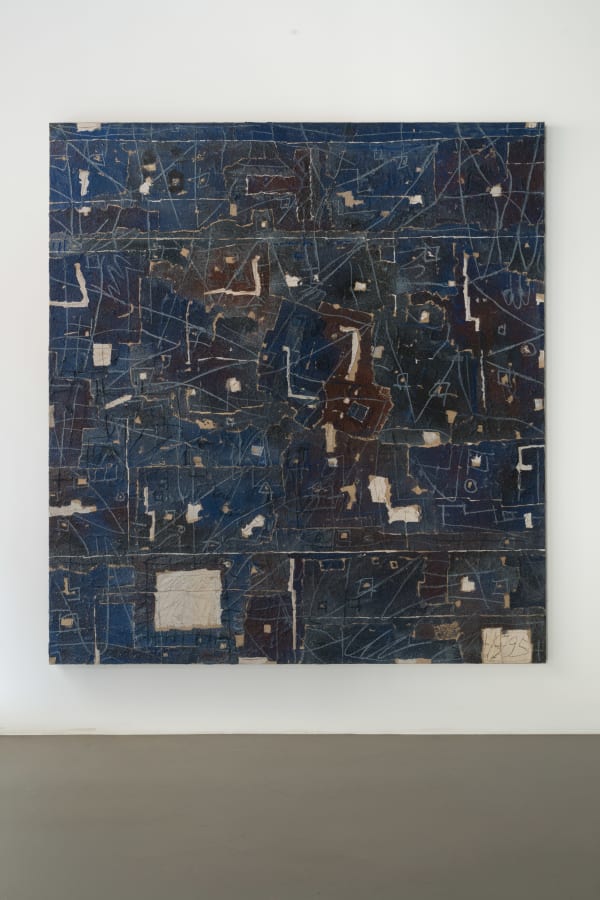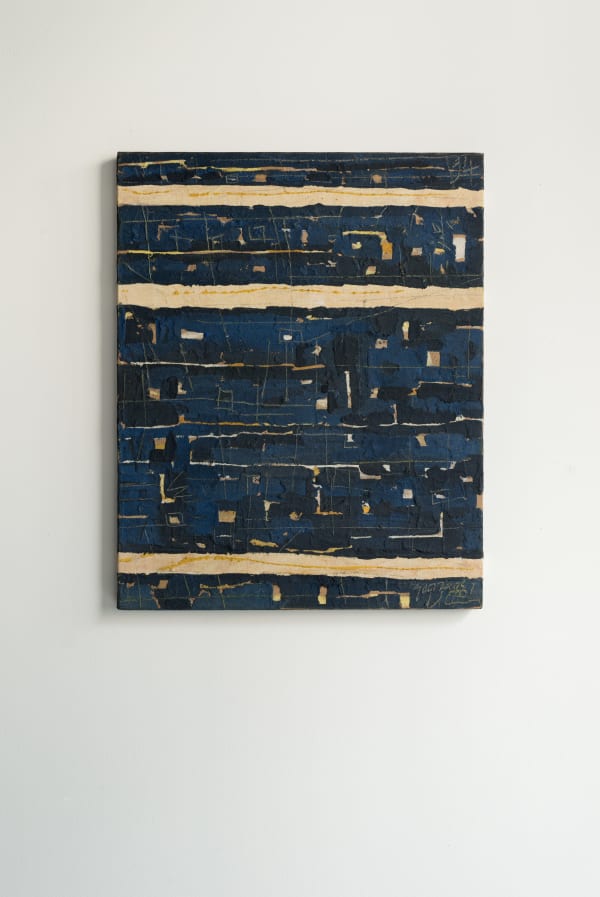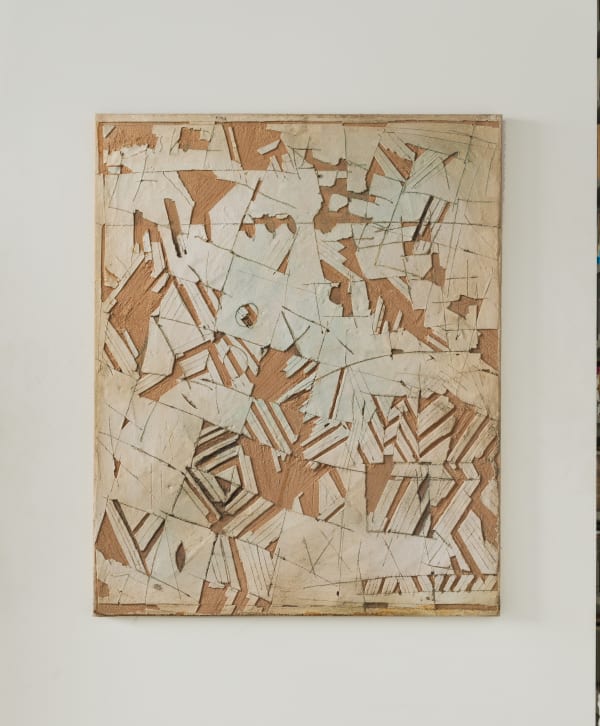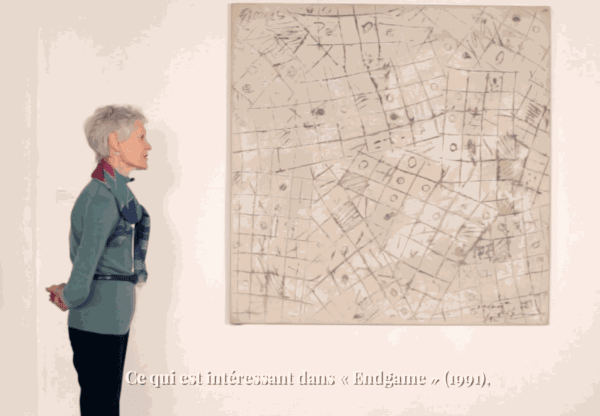GEORGES NOËL: La Magie du Signe
Galerie Dutko is pleased to present from November 4 to December 22, 2021 a retrospective exhibition of works by the French painter Georges Noël (1924–2010). For the artist’s first solo exhibition with the gallery, some twenty works will be presented, tracing the thread of nearly half a century of creation.
Georges Noël was born in 1924 in Béziers, and grew up in Pau. After studying engineering and painting, he became a designer for nine years in the aeronautical company Turboméca in Pau. In 1956, he moved to Paris to devote himself entirely to painting. From then on, he was fascinated by Dubuffet and Klee, Pollock and Fontana; he discovered Brassaï’s photographs of graffiti. Attracted by drawing and “automatic writing”, although not very interested in surrealism, he immediately invented a personal medium that would be found throughout his work: a mixture of pure pigments, sand and glue that produces a rough, grainy or velvety surface, depending on the artist’s will. This material lends itself to his writing in all its forms, whether it runs on the surface or is incised into it, or whether it tears or triturates the background. His vocabulary of signs, mysterious and magical, bears the imprint of his fascination for prehistoric, archaic and tribal cultures. In these “Palimpsestes”, a term dear to the artist, the material and the signs are, through their superimpositions and successive erasures, the expression of layers of memory, emotions and meaning.
If Georges Noël’s painting shows an uncommon stylistic diversity throughout his fifty-year career, a sumptuous material and writing (always renewed) remain more or less constant. The artist also drew a lot and his works on paper show the same work on the backgrounds and the same spontaneous and whimsical writing. A tireless worker, he also tried his hand at sculpture and made numerous prints (mainly woodcuts).
Represented by Galerie Paul Facchetti from 1957 until the end of the 1960s, Georges Noël exhibited extensively in Europe and the United States. During this period, his painting was associated with French and Italian “informal” art. The artist’s use of marouflaged and torn paper brings back to his admiration for Fontana, without forgetting the friendship that linked him at the time with Raymond Hains, François Dufrêne and Jacques de la Villéglé.
In 1968, Georges Noël moved to New York where he was represented by the Pace Gallery and Gallery Arnold Herstand. Under the American influence, his work became more structured and architectonic. Back in France in 1983, he prepares an important exhibition at the Abbaye de Senanque and in 1985, a retrospective at the Centre national des arts plastiques in Paris.
His pictorial evolution shows a synthesis between the gesturality of his beginnings and an underlying structure set up during his American period. From those years on, he regularly exhibited in Italy, Germany and Japan where his work was particularly appreciated.
The last Parisian exhibitions of Georges Noël were held at the Galerie Thessa Herold in 2008, 2010, 2013 and 2017, and at the Galerie Catherine Putman in 2008, 2009 and 2011. In 2015, the Musée d’Art Moderne de la Ville de Paris devoted an exhibition to him on the occasion of a major purchase and a donation. A prolific artist, his work is part of numerous private and public collections around the world.
In 2018, the Association des Amis (Association of Friends) de Georges Noël was founded, with the aim of making his work better known, and preparing the catalogue raisonné of his paintings.
ABOUT GEORGES NOËL:
Georges Noël’s work has been presented in numerous institutions including: the Centre national des arts plastiques, Paris, France; the Kunsthalle Mannheim, Kunstverein Wolfsburg, Germany; the Musée des Beaux-Arts, Pau, France ; the Scriptorium, Avranches, France; the Musée d’Art Moderne de la ville de Paris, France ; the Ungno Lee Museum, Daejon, South Korea; and the Renault Art et Industrie, Centre International de la Création Artistique, Abbaye de Sénanque, France. His works are present in several major collections such as the Albright-Knox Art Gallery, Buffalo, USA; the Solomon R. Guggenheim Museum, New York, USA: Baltimore Museum of Art, Baltimore, USA; Carnegie Institute, Pittsburgh, USA; Chase Manhattan Bank, New York, USA; Metropolitan Museum of Art, New York, USA; Musée National d’Art Moderne, Centre Georges Pompidou, Paris, France ; Musée d’Art Moderne de la Ville de Paris, France ; Musée d’Arts de Nantes, France ; Pinault Collection, Paris, France ; FRAC Alsace, Centre et Picardie, France ; FNAC, Paris, France ; the Musées des Beaux-Arts de Pau, Valence and Menton, France ; the Bibliothèque Nationale, Paris, France ; the Nationalgalerie, Berlin, Germany; the Städtische Kunsthalle, Mannheim, Germany; the Musée cantonal des Beaux-Arts, Lausanne, Switzerland ; the Muzeum Sztuki, Lodz, Poland; the Israel Museum, Jerusalem, Israel; the Tajimi Art Institute, Japan; the Ise Cultural Foundation, Tokyo, Japan; and the MAIIAM Contemporary Art Museum, Chiang Mai, Thailand.



